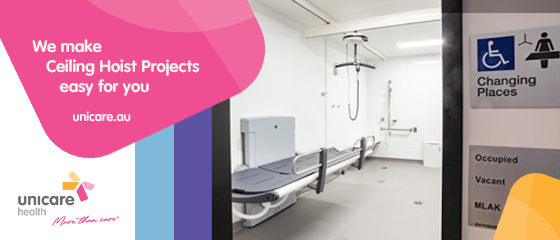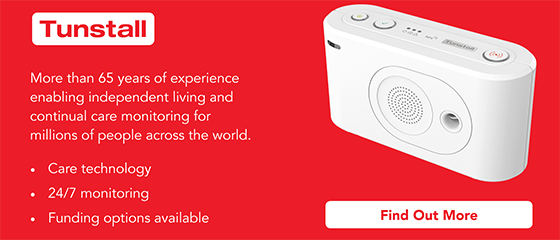Women’s Health Week 2023
 Women’s Health Week is 4-8 September 2023 and this year’s theme is ‘Grow your knowledge’. We spoke with Janelle Gullan about the role of OT in supporting women’s health and learnt more about OTA’s new Women’s Health Special Interest Group. Janelle is the convenor of the Women’s Health SIG and is owner and occupational therapist at The Wild Orange Tree.
Women’s Health Week is 4-8 September 2023 and this year’s theme is ‘Grow your knowledge’. We spoke with Janelle Gullan about the role of OT in supporting women’s health and learnt more about OTA’s new Women’s Health Special Interest Group. Janelle is the convenor of the Women’s Health SIG and is owner and occupational therapist at The Wild Orange Tree.
What are some of the unique health challenges women experience and how can OTs support them with these?
Firstly, it is important to acknowledge occupational therapists have always worked with women and mothers through existing professional roles and areas of practice. This area of practice acknowledges the additional overlay of occupational challenge that arises for people who experience menarche, birth, mothering, and menopause. This could include occupational and role adaptations, an increase in co-occupations and nested occupations, identity and value shifts, gender inequalities, environmental and sociological pressures, physical and cognitive changes, sensory overwhelm or nervous system activation, illness or injury events and lived experience arising from these transitions or underlying biology.
Occupational therapists can offer support by providing education through a matrescence or women’s health lens, completing task analysis to identify environmental factors or other barriers impacting engagement, supporting connection and village building, honouring rites of passage and subsequent relational changes, suggesting adaptive or restorative interventions, cocreating rituals and routines that match the person’s current season of life, providing connections between the physical/cognitive/mental health challenges that frequently coexist through feminine transitions, and guiding the search for meaning and purpose within changed occupational roles, habits and activities.
The women’s health area of practice also validates the role of occupational therapy to support women who are not chronically or acutely mentally or physically unwell, but who are struggling with the subtle yet complex occupational shifts that can occur quietly alongside menarche, matrescence and menopause causing significant disorientation and overwhelm. Our lens of viewing a situation as an interaction between the person, their environment and required occupations within the context of time and space is particularly valuable in this women’s health context.
We also want to acknowledge up front that not everyone who menstruates, births or has a womb identifies as a woman or mother, and this practice area encompasses the full breadth of identity and experiences of people who have biologically female bodies.
What was the inspiration to start the Women’s Health SIG and what is the aim of the group?
During COVID, we had an exponential increase in interest from occupational therapists to join the Women’s Health Occupational Therapy Australia Facebook page. Conversations in the group reflected the personal impact of women’s health issues on occupational performance, participation and justice during that time, as well as a growing interest from occupational therapists to provide professional services targeted especially to the areas of women’s or maternal health. Changes to Medicare funding for mental health care plans and requirements for telehealth eligibility facilitated an increase in occupational therapists starting to work in this area, particularly through private practice. Since 2015, locally and internationally, we have had an increase in published occupational therapy-based research related to women’s and maternal health and the role of our profession in these areas. Publication of an occupational model of practice for matrescence (Dr Hannah Slootjes, 2022) and the strong presence of women’s health content at the recent OTA National Conference were strong indicators that it was timely to advocate for a formal special interest group exploring this emerged area of practice.
The Women’s Health SIG aims to provide an education and information sharing platform for occupational therapists who are working in, or curious about working in, the area of women’s health and wellbeing. Areas of interest within women’s health include, but are not limited to, perinatal mental health, adjustment to mothering occupations, infant bonding and parenting support, lactation support, pregnancy or infant loss, maternal physical health, pelvic health, puberty and menstrual cycle support, women’s cancers, motherhood and disability intersection, and academia (women’s health focus).
While women’s health research is increasing within occupational therapy, it needs to be acknowledged there is a long history of women’s health being underrepresented or misrepresented within available evidence. There are a broad range of practice areas under the umbrella of women’s health, so this also impacts resources of interest. There are a growing number of resources and courses being developed by occupational therapists; however, we continue to draw strongly from a broad range of other professional knowledge bases such as midwifery, physiotherapy, psychology, sociology, trauma informed practice and infant development, and apply an occupational lens.
We hope the Women’s Health SIG is a way to help bring together the various pockets of knowledge and occupational therapy specific resources that are being developed within Australia and internationally in this area of practice.
Thoughts on Women’s Health Week and women’s health in general
There is a history covering almost two decades of occupational therapists formally providing services specifically targeted to women and mothers within Australia. We are so excited to see this area of practice being further acknowledged through this OTA special interest group; however, there are ongoing challenges. There is still lowered awareness by other health professionals about the role we can play to support the unique occupational needs of women and mothers throughout various life experiences. This impacts on referrals from general practitioners and the inclusion of our profession when women’s or maternal health services are developed from a top-down level.
Occupational therapists themselves are also still learning about the potential of our work in this area. There are currently a lot of practitioners who find this area of practice through their own personal experiences and the realisation of how valuable support from an occupational lens would have been. This starts a journey of wondering if occupational therapists could possibly practice in women’s health and discovering that there are already a large group of us who are. We hope that in the near future, all graduating occupational therapists will know that this is an area of practice that they can consider, gain experience in and even seek personal support from if they ever need it.







.jpg)






